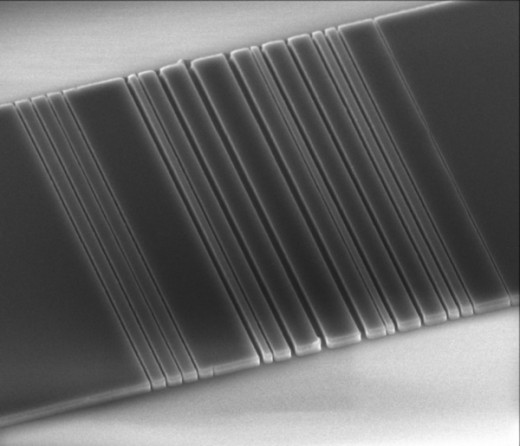Nanophotonics: computers without wires
Engineers at Stanford University have created a barcode-like silicon chip that can bend light, moving one step closer towards the creation of computers that use light instead of electricity to carry data.
Optical link
In what they describe as the ‘optical link’, researchers have created a tiny piece of silicon that has been etched with a barcode-like pattern.Light can carry more data than a wire
Writing on Stanford University’s news site, Chris Cesare says, “When a beam of light is shined at the link, two different wavelengths (colours) of light split off at right angles to the input, forming a T shape. This is a big step toward creating a complete system for connecting computer components with light rather than wires.”
Ultimately, using light rather than electricity would act as a much faster way of transmitting data. Electrical engineering professor Jelena Vuckovic, who led the research, says, “Light can carry more data than a wire, and it takes less energy to transmit photons than electrons”.Light speed
Cesare says, “The team engineered the effect using a subtle understanding of how the speed of light changes as it moves through different materials. What we call the speed of light is how fast light travels in a vacuum. Light travels a bit more slowly in air and even more slowly in water. This speed difference is why a straw in a glass of water looks dislocated.”
The barcode etchings were designed by an algorithm to make one wavelength of light go left and a different wavelength to go right.The end of wires?
Cesare says, “Both 1300-nanometer light and 1550-nanometer light, corresponding to C-band and O-band wavelengths widely used in fiberoptic networks, were beamed at the device from above. The bar code-like structure redirected C-band light one way and O-band light the other, right on the chip.


Comments (0)